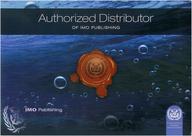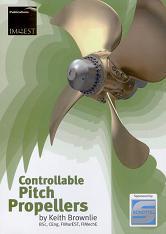Catálogo - LIBROS NÁUTICOS - Máquinas y Motores térmicos
Controllable Pitch Propellers
Autor: Keith Brownlie
Editorial: IMAREST (Institute of Marine Engineers)
Año de edición: 2.007
9780902536012
Encuadernación: rústica
104 pág.
15,0 x 21,0 cm.
48,90€
Temporalmente sin existencias
Contenido:
Controllable pitch propellers are used to propel a large number of vessels of many types. This informative book provides an essential understanding of the characteristics, construction, operation and maintenance of controllable pitch propellers. Those responsible for selecting and designing machinery systems, building and commissioning ships with controllable pitch propellers, managing or sailing them, or operating and maintaining ship's machinery, will all find useful practical information and gain a general appreciation of the subject.
Topics covered include a brief history, characteristics of controllable pitch propellers and their resultant applications, definitions of terms used, forces and moments on blades, constructional and working principles, descriptions of hydraulic and control systems installation design and setting-up, operation, ship handling, troubleshooting, and maintenance. In addition there is a discussion of the types of cavitation wich any be experienced, of erosion and of propeller excited noise and vibration.
Written in a clear and interesting style, wich does not require specialist knowledge, and backed up by 37 explanatory diagrams and illustrations, this title will be of use to marine engineering students as well as proving a useful reference for both seagoing and design engineers.
Índice:
Acknowledgements
Greek alphabet
List of figures
List of abbreviations
1. INTRODUCTION
2. CHARACTERISTICS OF CP PROPELLERS
2.1. Bollard pull
2.2. Manoeuvring
2.3. Windmilling
2.4. Operation with different machinery modes
2.5. Astern running
2.6. Zero thrust operation
2.7. Full power operation
2.8. Crash stop
3. CP PROPELLER APPLICATIONS
4. ECONOMIC CONSIDERATIONS
5. CP PROPELLER BLADES & GEOMETRY
5.1. Definitions
5.2. Blade sections
5.3. Design pitch
5.4. Pitch change effects
5.5. Skew
5.6. Rake
5.7. Blade outlines and areas
6. FORCES AND MOMENTS ON BLADES
6.1. Thrust and torque
6.2. Centrifugal loading
6.3. Spindle torque
6.4. Skewed blades
7. WORKING PRINCIPLES
7.1. Small CP propellers - Inboard actuation
7.2. Larger CP propellers - Servomotor in Hub
7.3. Hubs with double-acting servomotors
7.4. Feathering propellers
7.5. Adjustable pitch propellers
7.6. Materials
8. HYDRAULIC SYSTEMS
9. CONTROL SYSTEMS
10. INSTALLATION
10.1. Installation design
10.2. Setting-up at builder's trials
11. OPERATION OF CP PROPELLERS
11.1. Before main engines are started
11.2. Before going to sea
11.3. Operation at sea
11.4. Manoeuvring in confined waters
11.5. Manual control
11.6. Emergency pitch locking
11.7. Ship handling characteristics
12. TROUBLESHOOTING
13. MAINTENANCE
13.1. Maintenance at sea
13.2. Maintenance in harbour
13.3. In dry dock
13.4. Blade maintenance
14. CAVITATION, VIBRATION AND NOISE
14.1. Cavitation
14.2. Vibration
14.3. Noise
14.4. High skew blades
15. FUTURE TRENDS
16. INDEX
Precio: 48,90 €, I.V.A. incluido (4%)
[ Volver ]


